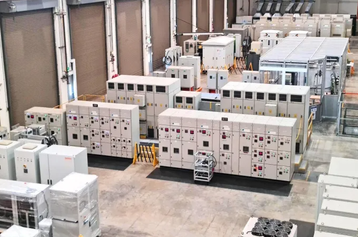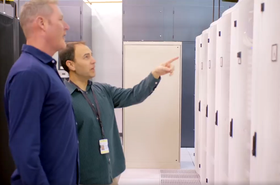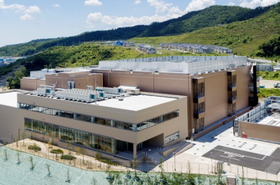A Singapore-based startup has been given $12.5 million in funding to develop solid-state transformers (SSTs), which could make electricity grids more efficient and flexible.
Amperesand makes SSTs, which could replace standard transformers in electricity distribution. While conventional transformers deliver alternating current (AC) at a different voltage level, solid-state versions can also deliver other options, including direct current (DC) which is useful for charging electric vehicles (EVs).
The investment round is led by Xora Innovation, Temasek’s early-stage arm, and Material Impact, with TDK Ventures and Foothill Ventures also taking part.
Transformers are found in substations, and on electricity poles, where they step down the voltage of electricity for the next stage of distribution. Replacing them with SSTs would allow new options including fast-charging for EVs at more locations.
Amperesand has spun out of the Nanyang Technological University of Singapore (NTU), and proposes SSTs as a way to upgrade the grid to allow more customizable AC/DC output at multiple locations.
SSTs could also address a shortage of conventional transformers reported by Reuters, and make grids more future-proof by supporting bidirectional power flow. Increasingly data centers and other facilities are using microgrids, where local power generation can sometimes provide power into the grid.
Solid-state transformers run cooler, and can be a quarter the size of traditional units, which are very efficient, but are based on heavy iron cores cooled in oil.
"We are thrilled to partner with Amperesand, a company tackling a critical issue that threatens the entirety of global electrification," said Nicolas Sauvage, president of TDK Ventures. "Their solid-state transformer technology has the potential to shore up power infrastructure to handle the already present EV future and do so in an efficient, reliable, sustainable way."
Amperesand says its transformers are ready, but told TechCrunch that they are still rejected by risk-averse utilities - hence the decision to sell them for EV charging.
They have the potential to add more control to grids, as they are more flexible and are fitted with sensors and management systems that could not be built on conventional transformers.
“The scale of what people are contemplating to deploy in the world with EV charging creates the largest market for transformers,” said Phil Inagaki, who is Amperesand’s interim CEO - and also managing director at the lead investor, Xora.
SSTs use silicon carbide chips which have been proposed for more efficient power distribution for some years.
Amperesand plans to deliver its first commercial units in 2025, in Singapore and the US.







